Start Here
Homepage Bottom Form
We will get back to you as soon as possible.
Please try again later.
Hidden Fire Damage Inspection Checklist
🧱 Hidden Damage Inspection Checklist
Created by House Fire Solutions – Protecting Homeowners from Overlooked Fire Damage
Even after visible fire damage is cleared,
hidden damage can silently threaten your home’s structure, air quality, and electrical systems.
This checklist helps you
inspect beyond the surface — identifying issues that could cause long-term safety hazards or insurance underpayment.
🔥 1. Structural Damage
Goal: Identify weakened framing, foundation, and load-bearing elements affected by heat or water.
| Inspection Area | What to Check | Why It’s Important |
|---|---|---|
| Framing & Joists | Look for char, cracks, warping, or smoke residue | Compromised strength even if only “smoke damaged” |
| Load-Bearing Walls | Inspect for hidden cracks under paint or drywall | Fire heat weakens integrity |
| Ceilings & Attic Joists | Probe wood for brittleness or soot stains | Indicates smoke or heat penetration |
| Foundation & Slab | Look for spalling, cracking, or heat discoloration | High heat can expand and fracture concrete |
| Subflooring | Remove sections to check for trapped moisture | Leads to rot and structural instability |
| Roof Trusses | Examine for hidden charring above ceiling drywall | Roofs often hide lingering damage |
✅ Pro Tip: Hire a structural engineer for a post-fire load assessment before rebuilding.
⚡ 2. Electrical System Damage
Goal:
Find melted insulation, short circuits, or hidden wiring hazards caused by heat and soot.
| Inspection Area | What to Check | Why It’s Important | Notes |
|---|---|---|---|
| Main Electrical Panel | Look for soot, melted breakers, or corrosion | Hidden shorts can spark future fires | |
| Wiring in Walls | Check insulation for brittleness or burn odor | Heat can damage copper without visible charring | |
| Outlets & Switches | Replace any discolored or soot-stained plates | Smoke residue conducts electricity | |
| Light Fixtures | Remove covers and check wiring and contacts | Hidden soot = potential arc points | |
| Appliance Circuits | Test major lines (oven, washer, HVAC) | Ensure no voltage drop or resistance increase | |
| Grounding & GFCIs | Verify all GFCIs reset and function properly | Common failure point after smoke exposure |
✅ Pro Tip: Always have a licensed electrician test circuits with a megohmmeter post-fire.
💨 3. HVAC & Air Quality Systems
Goal: Detect smoke, soot, or moisture trapped in ducts and air handlers.
| Inspection Area | What to Check | Why It’s Important | Notes |
|---|---|---|---|
| Ductwork (Supply & Return) | Inspect for soot, odor, and sticky residue | Circulates smoke particles throughout home | |
| Air Handler / Furnace | Check blower motor and coil for black film | Can cause poor airflow and recontamination | |
| Evaporator & Condenser Coils | Clean or replace after fire | Can cause poor airflow and recontamination | |
| Air Filters | Replace immediately and after each cleaning cycle | Filters clog quickly with soot dust | |
| Registers & Vents | Remove covers and clean interior duct openings | Hidden soot can smell for months | |
| Odor Treatment | Ozone or hydroxyl deodorization | Restores clean air before move-in |
✅ Pro Tip: Run an air quality test for VOCs and fine particulates before reoccupying your home.
💧 4. Plumbing & Water Systems
Goal:
Find heat damage to pipes, joints, and fixtures from firefighting water or direct exposure.
| Inspection Area | What to Check | Why It’s Important | Notes |
|---|---|---|---|
| PVC & PEX Pipes | Look for discoloration or softness | Heat causes future burst risk | |
| Copper Pipes | Inspect for warping or pinholes | Heat weakens solder joints | |
| Fixtures (Sinks, Tubs) | Check seals and caulk for melting | May leak later | |
| Sewer Lines | Camera inspect under slab or crawlspace | Debris or soot can block flow | |
| Hot Water Heater | Examine pressure relief valve and tank | Can rupture from heat stress |
✅ Pro Tip: Have a licensed plumber pressure-test your system post-fire before turning on main water.
🪵 5. Insulation, Drywall & Hidden Cavities
Goal:
Identify smoke and moisture trapped behind walls.
| Inspection Area | What to Check | Why It’s Important | Notes |
|---|---|---|---|
| Wall Cavities | Cut test holes to check for odor and soot | Soot-laden insulation causes smell reoccurrence | |
| Attic Insulation | Inspect for dark residue or compressed fibers | Retains odor and toxins | |
| Drywall | Smell test and infrared scan for moisture | Mold forms within 72 hours of water exposure | |
| Ceiling Cavities | Check under insulation layers for soot | Mold forms within 72 hours of water exposure | |
| Behind Cabinets | Remove baseboard and toe-kicks | Hidden damage and odors linger |
✅ Pro Tip: Replace all insulation exposed to smoke or moisture — cleaning won’t fix trapped odor molecules.
🧯 6. Smoke, Odor & Air Contamination
Goal:
Ensure full deodorization and air quality restoration.
| Inspection Area | What to Check | Why It’s Important | Notes |
|---|---|---|---|
| Porous Surfaces (Wood, Fabric) | Test for lingering odor | Absorbed smoke = long-term smell | |
| Walls & Ceilings | UV or ozone fog test for invisible residue | Soot film reappears with humidity | |
| HVAC Returns | Smell test after 24 hours of operation | Reveals trapped odor source | |
| Crawlspaces / Attic | Smell test after 24 hours of operation | Spreads airborne contaminants | |
| Air Test Results | Fine particulate levels >35 µg/m³ = unsafe | Guides final cleaning steps |
✅ Pro Tip: Always perform a post-cleaning air quality test to verify safety before re-entry.
🧰 7. Contents & Personal Property
Goal:
Identify household items that can or can’t be restored safely.
| Inspection Area | What to Check | Why It’s Important | Notes |
|---|---|---|---|
| Furniture | Check for odor absorption and soot film | Check for odor absorption and soot film | |
| Electronics | Test for residue and corrosion | Smoke particles short-circuit boards | |
| Clothing & Fabrics | Smell test and UV check | Smell test and UV check | |
| Artwork & Documents | Smoke embeds deeply in fibers | Heat can cause permanent discoloration | |
| Mattresses & Upholstery | Always replace | Fire and smoke toxins can’t be cleaned |
✅ Pro Tip: Document all unsalvageable contents with photos and receipts for insurance reimbursement.
🧩 8. Miscellaneous & Hidden Systems
| Inspection Area | What to Check | Why It’s Important | Notes |
|---|---|---|---|
| Attic Wiring / Fans | Inspect for melted sheathing | Common hidden hazard | |
| Crawlspace Insulation | Test for odor and residue | Airborne soot collects in low areas | |
| Chimney / Flue | Clean and camera inspect | May have soot blockage or cracks | |
| Garage / Workshop | Inspect for chemical residue | Risk of fume ignition | |
| Solar Panels / Wiring | Check inverters for corrosion | Heat damage can void warranties |
✅ Pro Tip: Include these in your insurance supplement if overlooked in the original adjuster report.
💡 Final House Fire Solutions Advice
The danger you can’t see after a fire is often what costs the most later.
Use this checklist to protect your safety, your home, and your insurance payout.
Our Team Helps You Navigate Insurance, Restoration, and Rebuilding
It is a long established fact that a reader will be distracted by the readable content of a page when looking at its layout.
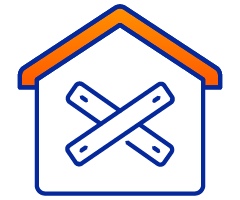
Board-Up
Our Network of Board Up Specialist Will Secure your property fast
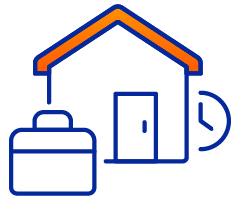
Temp Housing
We'll Help You Find Safe Shelter while you recover
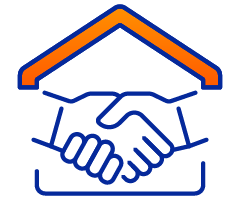
Public Adjusters
Our Network of Fire Damage Adjusters Will Fight Help for a fair insurance payout
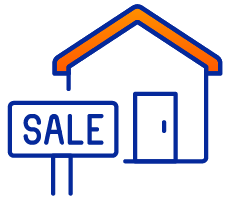
Investors
Our Partner Specializes in Buying Fire Damaged Homes So you Can Sell your home as-is
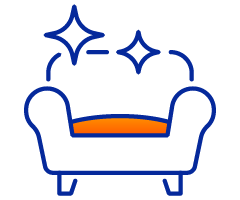
Content Cleaning
Restore what matters most
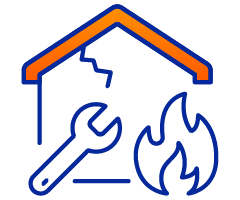
Restoration
Bring your home back to life
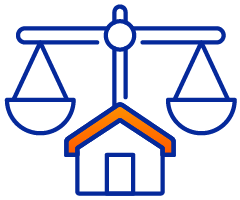
Attorneys
We have a network of Protect your rights and claims

Mental Health
Support for you and your family
Want To See If We Can Help You
If you'd like to speak with us today about purchasing Social Security, Personal Injury, Workers' Compensation or Employment Law Leads.
Homepage Bottom Form
We will get back to you as soon as possible.
Please try again later.